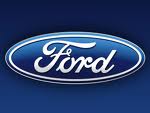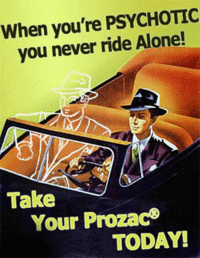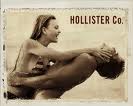Product Placement
“Converse All-Stars, Vintage 2004.”
– Will Smith on Product Placement
“STIX NIX PRODUX PIX”
– Variety on Product Placement
Product placement or embedded marketing is a form of advertisement where branded goods or services are placed in a context usually devoid of ads such as video games, websites, books, clothing, furniture, paintings, weather patterns, school courses, and Congressional hearings. The product placement is often not disclosed at the time that the good or service is featured. This revolutionary method of delivering commercial content, which became common in the 1980s, forms powerful emotional connections, allows more specific demographic targeting, and ultimately serves to promote synergy across brands, ushering in a new age of economic innovation.
But worry not: as Uncyclopedia, the content-free encyclopedia is a noncommercial wiki we have no need to stoop as low as that. Now, put on your Hollister T-shirt, hop into your Ford Focus, and be sure to pack extra bags of Tostitos. We're going down the exciting trail of product placement.
Kinds of product whoring[edit | edit source]
Actual product placement falls into two categories: products or locations that are obtained from manufacturers or owners to reduce the cost of production( accidental whoring), and products deliberately placed into productions in exchange for fees.( pure product prostitution)
Sometimes, product usage is negotiated rather than paid for. This is done by corporate pimps. Some placements provide productions with below-the-line savings, with products such as props, clothes and cars being loaned for the production's use, thereby saving them purchase or rental fees. Barter systems (the director/actor/producer wants one for himself) and service deals (cellular phones provided for crew use, for instance) are also common practices. Producers may also seek out companies for product placements as another savings or revenue stream for the movie, with, for example, products used in exchange for help funding advertisements tied-in with a film's release, a show's new season or other event.
A variant of product placement is advertisement placement. In this case an advertisement for the product (rather than the product itself) is seen in the movie or television series. Examples include a Lucky Strike cigarette advertisement on a billboard or a truck with a milk advertisement on its trailer. Or a close-up of the condom wrapper during hard core porn.
Another variant is the widespread use of promotional consideration in which a television game show would award an advertiser's product as a prize or consolation prize in return for a subsidy from the product's manufacturer. In other words they literally have to give their product away to get it to the people. This is not unlike a drug dealer giving samples of crack cocaine near school yards in hopes they will come back for more.
Product placement companies work to integrate their client company brands with film and television productions. Jay May, president of Feature This!, a branded entertainment company, explains the process: “The studio sends us the script. We break it down. We look for our clients’ demographics and then we tell our client this movie is available with this actor, with this director, with this producer, do you want it? Then we treat him to a night a the local topless bar on us."
Early History[edit | edit source]
Despite what some may have you believe, product placement has been utilized for millienia. The renowned cave painter Gak-Ook-Ratar was known to use product placement in his works, like the seminal Gak Ttopt Filoo (Man Kills Deer), in which the titular Man is obviously using a Gyowar Brand spear to kill said Deer. In the follow-up painting, Ratar and his cave companions are dancing around a fire lit by L'kyib Brand flint (It's a known fact that L'kyib flint was produced by Ratar's cousin, Ekk-Goooo-Psjog. Nepotism much?).
 This technique continued to be widely used during the Renaissance era, as in Christopher Marlowe's lost work The Banker of Milan:
This technique continued to be widely used during the Renaissance era, as in Christopher Marlowe's lost work The Banker of Milan:
| “ | ...And I balked at disgust, for what I did find. That Guylock did not deign to use Earl Shampoo! Lo, it is the only shampoo in the land fit for the Queen! My soul could not bear this travesty! Posthaste, I retreated to my castle and doth proceeded to plot my revenge. | ” |
 Unfortunately, no copies of this play survive, due to allegations of plagiarism. Tragic, really. But by buying a Family-size ADT-protected safe, you can be assured your family's precious documents are safe and sound. Much more trustworthy than some bank.
Unfortunately, no copies of this play survive, due to allegations of plagiarism. Tragic, really. But by buying a Family-size ADT-protected safe, you can be assured your family's precious documents are safe and sound. Much more trustworthy than some bank.
Modern Examples[edit | edit source]
The use of product placement has only increased in recent years, after being frowned upon by many for decades. Heck, even James Bond himself is aware of the inherent sexiness in an Omega watch. The only watch with customizable wrist straps!
Other Opinions[edit | edit source]
In the interest of fairness, this article will attempt to provide the opinions of others on this matter:
"I believe product placement is a blatant violation of consumer laws. The FTC must step up to the plate. It must be willing to strictly enforce advertising laws. People are innocent. Corporations are evil. Their powers must be curtailed or their influence will spread across this great nation, eventually seeping into the highest office in the land! By the way, vote Obama!"
"The MAN is trying to put us DOWN! With their incessant ADS for Proactiv and Magic Bullet! I speak for ALLLL OF AMERICA when I say DOWN with COMMERCIALISM! If you want more details, read my latest book: The Capitalist Conspiracy! NOW available at YOUR local Barnes & Noble!"
I believe you'll agree with me when I say these opinions are false and unsubstantiated. You can't stop the future.
Legal Stuff[edit | edit source]
Much of the current body of broadcast law pertaining to the obligation of licensed broadcasters to disclose to audiences when they (or their staff) receive money or valuables in return for on-air promotion of a product dates to the payola scandals of 1950s broadcast radio.
An investigation launched in November 1959 into allegations that some radio disc jockeys had accepted bribes in return for radio airplay led to the indictment of disc jockey Alan Freed (of WABC and WINS) on May 9, 1960; he would be fined for accepting $2,500, a bottle of booze, and a hooker, to play certain songs, a violation of commercial bribery laws, and would ultimately lose his employment in commercial radio. On September 13, 1960 the US government acted to ban broadcasting. Under current United States law, Section 317 of the Communications Act states that "All matter broadcast by any radio station for which money, service, or other valuable consideration is directly or indirectly paid, or promised to or charged or accepted by, the station so broadcasting, from any person, shall, at the time the same is so broadcast, be announced as paid for or furnished, as the case may be, by such person. . ." with similar and related provisions reflected in Federal Communications Commission regulations as CFR 47, Section 73.1212.
Notes[edit | edit source]
Promotional consideration for this article provided by http://www.7up.com/%7C. You just can't ignore the feel-good taste of 7-Up!
Authors note[edit | edit source]
Writing this page would not have been possible without a stomach full of MacDonald's.






